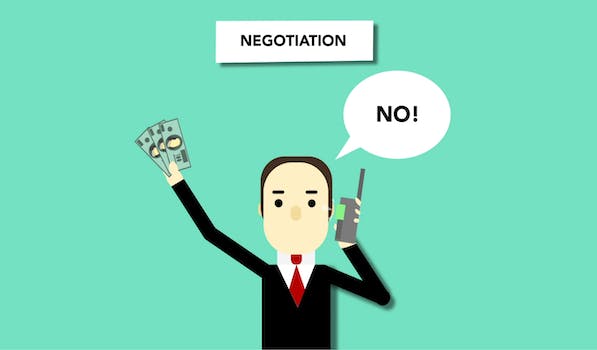How To Start A Business Presentation Example
“Learn the essential steps to launch your dream business with our presentation example.”
Introduction
In this article, we will provide an example of how to start a business presentation. A well-crafted introduction can set the tone for the rest of the presentation and capture the audience’s attention. We will provide tips and strategies for creating an effective introduction that will engage your audience and leave a lasting impression.
Creating a Compelling Business Pitch: Tips and Tricks
Starting a business can be a daunting task, but presenting your business idea to potential investors or partners can be even more intimidating. A business presentation is a crucial step in securing funding and support for your venture. It is important to create a compelling pitch that effectively communicates your vision and goals. In this article, we will provide tips and tricks on how to start a business presentation example that will captivate your audience.
Firstly, it is important to understand your audience. Research the individuals or groups you will be presenting to and tailor your pitch accordingly. Consider their interests, values, and goals. This will help you to create a presentation that resonates with them and increases your chances of success.
Next, start with a strong opening. Your opening should grab the attention of your audience and set the tone for the rest of the presentation. You can use a powerful quote, a surprising statistic, or a personal story to engage your audience. This will help to create a connection with your audience and make them more receptive to your message.
After your opening, introduce your business idea. Clearly explain what your business does, what problem it solves, and how it is unique. Use simple language and avoid technical jargon that may confuse your audience. This will help to ensure that your message is clear and easy to understand.
Once you have introduced your business idea, it is important to provide evidence to support your claims. Use data, case studies, and testimonials to demonstrate the effectiveness of your product or service. This will help to build credibility and increase the confidence of your audience in your business.
In addition to evidence, it is important to address any potential objections or concerns that your audience may have. Anticipate any questions or objections that may arise and provide clear and concise answers. This will help to alleviate any doubts or reservations that your audience may have and increase their confidence in your business.
Finally, end your presentation with a strong call to action. Clearly state what you want your audience to do next, whether it is to invest in your business, partner with you, or simply learn more. Provide contact information and make it easy for your audience to take the next step.
In conclusion, starting a business presentation can be a daunting task, but with the right approach, it can be a powerful tool for securing funding and support for your venture. By understanding your audience, starting with a strong opening, providing evidence, addressing objections, and ending with a strong call to action, you can create a compelling pitch that effectively communicates your vision and goals. With these tips and tricks, you can confidently start your business presentation and take the first step towards success.
The Importance of Storytelling in Your Business Presentation

Starting a business presentation can be a daunting task, especially if you’re not sure where to begin. One of the most important aspects of a successful business presentation is storytelling. Storytelling is a powerful tool that can help you connect with your audience and convey your message in a memorable way. In this article, we’ll explore the importance of storytelling in your business presentation and provide some tips on how to incorporate it into your next presentation.
First and foremost, storytelling is a way to engage your audience. People are naturally drawn to stories, and they can help you capture your audience’s attention from the very beginning. By telling a story, you can create an emotional connection with your audience and make your presentation more relatable. This emotional connection can help you build trust with your audience and make them more receptive to your message.
Another benefit of storytelling is that it can help you simplify complex ideas. Business presentations often involve complex concepts and data, which can be difficult for your audience to understand. By using storytelling, you can break down these complex ideas into simpler, more relatable terms. This can help your audience better understand your message and retain the information you’re presenting.
When incorporating storytelling into your business presentation, it’s important to keep a few things in mind. First, make sure your story is relevant to your message. Your story should help illustrate the point you’re trying to make, rather than distract from it. Additionally, make sure your story is concise and to the point. You don’t want to lose your audience’s attention by rambling on for too long.
Another important aspect of storytelling is authenticity. Your audience can tell when you’re not being genuine, so it’s important to tell a story that is true to you and your experiences. This authenticity can help you build trust with your audience and make your presentation more impactful.
So, how do you incorporate storytelling into your business presentation? One way is to start with a personal anecdote. This can help you establish a connection with your audience and set the tone for the rest of your presentation. You can also use storytelling to introduce your product or service. By telling a story about how your product or service has helped someone, you can illustrate its value and make it more relatable to your audience.
In addition to personal anecdotes, you can also use case studies or customer testimonials to tell a story. These examples can help illustrate the benefits of your product or service and provide real-world examples of how it has helped others. By using these examples, you can make your presentation more tangible and help your audience better understand the value of what you’re offering.
In conclusion, storytelling is a powerful tool that can help you connect with your audience and convey your message in a memorable way. By incorporating storytelling into your business presentation, you can engage your audience, simplify complex ideas, and build trust. Remember to keep your story relevant, concise, and authentic, and use personal anecdotes, case studies, or customer testimonials to illustrate your message. With these tips, you can create a business presentation that is both informative and engaging.
Designing an Effective Business Presentation: Dos and Don’ts
Starting a business presentation can be a daunting task, especially if you are not used to public speaking. However, with the right preparation and mindset, you can deliver a compelling presentation that will capture your audience’s attention and leave a lasting impression. In this article, we will discuss some dos and don’ts of designing an effective business presentation.
Do: Start with a clear objective
Before you start designing your presentation, it is essential to have a clear objective in mind. What do you want to achieve with your presentation? Are you trying to persuade investors to fund your business idea? Are you trying to convince potential customers to buy your product? Once you have a clear objective, you can tailor your presentation to achieve that goal.
Don’t: Overload your presentation with information
One of the biggest mistakes people make when designing a business presentation is trying to include too much information. Remember, your audience has a limited attention span, and if you overload them with information, they will quickly lose interest. Instead, focus on the key points that support your objective and present them in a clear and concise manner.
Do: Use visuals to enhance your message
Visuals can be a powerful tool to enhance your message and keep your audience engaged. Use charts, graphs, and images to illustrate your points and make them more memorable. However, be careful not to overuse visuals or use them as a crutch. Your presentation should still be able to stand on its own without the visuals.
Don’t: Use jargon or technical terms
Using jargon or technical terms can be a turn-off for your audience, especially if they are not familiar with the industry or subject matter. Instead, use plain language that everyone can understand. If you must use technical terms, make sure to define them clearly and provide examples to illustrate their meaning.
Do: Practice, practice, practice
Practice is essential to delivering a successful business presentation. Practice your delivery, timing, and pacing to ensure that you are confident and comfortable with your material. You can also practice in front of a friend or colleague to get feedback and make adjustments.
Don’t: Read from your slides
Reading from your slides is a surefire way to lose your audience’s attention. Your slides should be a visual aid to support your presentation, not a script. Instead, use bullet points or keywords to remind you of your talking points and speak naturally.
Do: Engage your audience
Engaging your audience is crucial to keeping their attention and making your presentation memorable. Ask questions, encourage participation, and use anecdotes or stories to illustrate your points. You can also use humor to lighten the mood and make your presentation more enjoyable.
Don’t: Rush through your presentation
Rushing through your presentation can make you appear nervous or unprepared. Take your time and speak at a comfortable pace. Pause occasionally to allow your audience to absorb your message and ask questions.
In conclusion, designing an effective business presentation requires careful planning, preparation, and practice. By following these dos and don’ts, you can deliver a compelling presentation that will capture your audience’s attention and achieve your objectives. Remember to start with a clear objective, use visuals to enhance your message, practice your delivery, engage your audience, and speak naturally. With these tips, you can start your business presentation with confidence and make a lasting impression.
Crafting a Memorable Elevator Pitch for Your Business
Starting a business can be a daunting task, but one of the most important steps is crafting a memorable elevator pitch. An elevator pitch is a brief, persuasive speech that you can use to spark interest in what your business does. It’s called an elevator pitch because it should be short enough to deliver during a brief elevator ride.
Crafting a memorable elevator pitch is essential because it’s often the first impression you’ll make on potential investors, customers, and partners. Here are some tips to help you create a compelling elevator pitch for your business.
1. Start with a hook
The first few seconds of your elevator pitch are crucial. You need to grab your audience’s attention and make them want to hear more. Start with a hook that’s relevant to your business and will resonate with your audience. For example, if you’re pitching a new app, you could start with a statistic about how many people use smartphones.
2. Explain what your business does
Once you’ve hooked your audience, it’s time to explain what your business does. Keep it simple and straightforward. Avoid using jargon or technical terms that your audience may not understand. Instead, focus on the benefits of your product or service and how it solves a problem for your customers.
3. Highlight your unique selling proposition
What sets your business apart from the competition? This is your unique selling proposition (USP). It’s what makes your business unique and why customers should choose you over your competitors. Make sure to highlight your USP in your elevator pitch.
4. Provide social proof
Social proof is evidence that other people have used and benefited from your product or service. It can be in the form of customer testimonials, case studies, or statistics. Including social proof in your elevator pitch can help build credibility and trust with your audience.
5. End with a call to action
The goal of your elevator pitch is to get your audience interested in your business and take action. End your pitch with a call to action, such as scheduling a meeting or visiting your website. Make it easy for your audience to take the next step.
6. Practice, practice, practice
Once you’ve crafted your elevator pitch, it’s time to practice. Practice in front of a mirror, with friends or family, or record yourself and listen back. The more you practice, the more confident you’ll be when it’s time to deliver your pitch.
In conclusion, crafting a memorable elevator pitch is essential for any business owner. It’s a brief, persuasive speech that can spark interest in what your business does. Start with a hook, explain what your business does, highlight your unique selling proposition, provide social proof, end with a call to action, and practice, practice, practice. With these tips, you’ll be well on your way to creating a compelling elevator pitch for your business.
How to Engage Your Audience During Your Business Presentation
Starting a business presentation can be a daunting task, especially if you’re not used to public speaking. However, with the right preparation and mindset, you can engage your audience and deliver a successful presentation. In this article, we’ll discuss some tips on how to start a business presentation example and keep your audience engaged throughout.
Firstly, it’s important to know your audience. Who are they? What are their interests and needs? Understanding your audience will help you tailor your presentation to their needs and make it more engaging. You can start by introducing yourself and your company, but make sure to keep it brief and to the point. Your audience wants to know what you can do for them, not just who you are.
Next, start with a hook. A hook is a statement or question that grabs your audience’s attention and makes them want to hear more. It could be a surprising statistic, a personal story, or a thought-provoking question. Whatever it is, make sure it’s relevant to your presentation and sets the tone for what’s to come.
Once you have your audience’s attention, it’s time to introduce your topic. This is where you explain what your presentation is about and why it’s important. Make sure to highlight the benefits of your product or service and how it can solve your audience’s problems. Use examples and case studies to illustrate your points and make them more relatable.
As you move into the main body of your presentation, it’s important to keep your audience engaged. Use visuals such as slides, videos, or infographics to break up the monotony of talking. Make sure your visuals are clear and easy to understand, and don’t overload them with too much information. Use bullet points and short sentences to convey your message.
Another way to keep your audience engaged is to ask questions. Ask for their opinions or experiences related to your topic. This not only keeps them engaged but also helps you understand their needs and concerns better. You can also use interactive activities such as polls or quizzes to make your presentation more engaging.
As you near the end of your presentation, it’s important to summarize your main points. This helps your audience remember what you’ve said and reinforces your message. You can also use this time to make a call to action. This could be asking your audience to sign up for a free trial, visit your website, or contact you for more information.
Finally, end your presentation with a strong closing statement. This could be a memorable quote, a call to action, or a summary of your main points. Make sure to thank your audience for their time and attention, and leave them with a positive impression of you and your company.
In conclusion, starting a business presentation can be nerve-wracking, but with the right preparation and mindset, you can engage your audience and deliver a successful presentation. Remember to know your audience, start with a hook, introduce your topic, use visuals, ask questions, summarize your main points, make a call to action, and end with a strong closing statement. With these tips, you’ll be well on your way to delivering a memorable and engaging business presentation.
Conclusion
Conclusion: Starting a business presentation is a crucial step towards achieving success in the business world. It requires careful planning, research, and preparation to ensure that the presentation effectively communicates the business idea and goals to potential investors or partners. By following the tips and examples provided in this guide, entrepreneurs can create a compelling and persuasive business presentation that will help them secure the funding and support they need to turn their vision into a reality.






